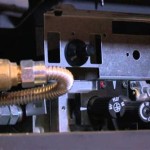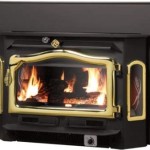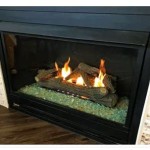```html
How To Redo Your Fireplace Surround
The fireplace, often a focal point of a living room or gathering space, can significantly impact the overall aesthetic of a home. Over time, the fireplace surround, the decorative facing around the firebox, may become outdated, damaged, or simply no longer fit the homeowner's evolving style. Redoing a fireplace surround presents an opportunity to revitalize the space, transforming it into a more modern, elegant, or personalized feature. This article will detail the process of redoing a fireplace surround, outlining key considerations and steps to achieve a successful and aesthetically pleasing result.
Before embarking on the project, careful planning and assessment are crucial. This involves evaluating the existing surround, selecting appropriate materials, and ensuring compliance with safety regulations. Neglecting these preliminary steps can lead to costly mistakes and potentially hazardous outcomes.
Assessing the Existing Fireplace Surround
The initial step involves a thorough inspection of the current fireplace surround. The goal is to identify any existing damage, determine the underlying structure, and understand the limitations or possibilities for the renovation. Common issues to look for include cracks, chips, water damage, or loose components in brick, stone, or wood surrounds. Note any structural problems that might necessitate professional assistance.
Determining the material composition of the existing surround is also essential. Is it brick, stone, tile, wood, or a combination of these materials? The type of material will dictate the appropriate removal techniques and the types of adhesives, mortars, or fasteners that can be used for the new surround. Understanding the substructure, which may be made of wood framing, cement board, or masonry, is equally important. This information will guide the selection of suitable anchoring methods.
Measurements are paramount. Accurately measure the dimensions of the existing surround, including the height, width, and depth. These measurements will serve as a basis for designing and constructing the new surround. Consider the size of the firebox opening and ensure that the new surround maintains appropriate clearances for safe fireplace operation. Note the dimensions of any existing hearth, the non-combustible area extending out from the fireplace opening. This area must meet local building codes and ensure adequate protection for flooring.
Finally, consider the overall style of the room and the desired aesthetic for the new fireplace surround. Research different styles, materials, and finishes to find inspiration and create a cohesive design that complements the existing decor.
Selecting Appropriate Materials
The choice of materials for the new fireplace surround significantly affects its appearance, durability, and cost. A wide range of options is available, each with its own advantages and disadvantages. Common materials include wood, stone, brick, tile, concrete, and metal.
Wood surrounds offer a classic and customizable option, allowing for intricate detailing and a variety of finishes. Wood surrounds can be painted, stained, or left natural to create a warm and inviting atmosphere. However, it is crucial to use fire-resistant wood and maintain appropriate clearances from the firebox to prevent fire hazards. Ensure the wood is properly sealed to protect it from moisture and heat damage.
Stone surrounds provide a natural and elegant look, adding a touch of sophistication to any room. Stone can be used in various forms, including natural stone veneer, manufactured stone, or full-thickness stones. Stone is durable and fire-resistant, making it a safe and long-lasting option. However, stone can be more expensive and requires specialized installation techniques.
Brick surrounds offer a rustic and timeless appeal, evoking a sense of warmth and tradition. Brick is durable, fire-resistant, and relatively low-maintenance. It can be painted, whitewashed, or left natural to achieve different aesthetic effects. Brick veneer is a lighter and less expensive alternative to full-thickness brick.
Tile surrounds provide a versatile and colorful option, allowing for creative designs and patterns. Tile is available in a wide range of materials, including ceramic, porcelain, glass, and stone. Tile is durable, easy to clean, and fire-resistant, making it a practical choice for fireplace surrounds. However, installation requires careful attention to detail to ensure a smooth and even surface.
Concrete surrounds offer a modern and industrial look, adding a touch of minimalist elegance to the space. Concrete can be pre-cast or poured in place, allowing for custom shapes and sizes. Concrete is durable and fire-resistant, but it can be prone to cracking if not properly sealed and maintained.
Metal surrounds, often made of steel, copper, or brass, provide a sleek and contemporary look. Metal is durable, fire-resistant, and easy to clean. It can be used in various finishes, including brushed, polished, or patinated. However, metal can be more expensive than other materials and may require specialized installation techniques.
When selecting materials, consider the overall style of the room, the budget, and the level of maintenance required. Choose materials that are compatible with the existing fireplace and that meet all safety regulations.
The Redoing Process: From Removal to Installation
The process of redoing a fireplace surround involves several key steps, including removing the existing surround, preparing the surface, installing the new surround, and finishing the details. Each step requires careful attention to detail to ensure a successful and aesthetically pleasing result.
Removal of the existing surround should be done carefully to avoid damaging the surrounding walls or the fireplace itself. Depending on the material, this may involve using a hammer and chisel, a pry bar, or a saw. Protect the floor and surrounding areas with drop cloths. Wear safety glasses and gloves to protect against debris and sharp edges. If the existing surround contains asbestos or other hazardous materials, it is crucial to hire a professional abatement company to remove it safely.
Once the existing surround has been removed, prepare the surface for the new surround. This involves cleaning the surface to remove any dust, dirt, or debris. Repair any cracks or holes in the wall or substructure. If necessary, install a new layer of cement board or other fire-resistant material to provide a smooth and stable surface for the new surround. Ensure that the surface is level and plumb before proceeding.
Installation of the new surround will depend on the material and design. For wood surrounds, this may involve building a frame from fire-resistant lumber and attaching the wood facing with screws or nails. For stone or brick surrounds, this may involve applying mortar to the back of each piece and setting it in place. For tile surrounds, this may involve applying thin-set mortar to the surface and setting the tiles in a pattern. Use spacers to ensure consistent grout lines. For concrete or metal surrounds, this may involve using specialized adhesives or fasteners to attach the surround to the wall.
After the surround has been installed, finish the details to complete the project. This may involve applying grout between tiles, caulking around the edges of the surround, or painting or staining the wood. Ensure that all fasteners are countersunk and filled. Clean the surface to remove any excess mortar, grout, or paint. Inspect the surround for any imperfections and make any necessary repairs.
Following installation, ensure proper ventilation and clearances around the fireplace. Consult local building codes and manufacturer's instructions for specific requirements. Allow sufficient time for mortar, adhesives, or paint to dry and cure before using the fireplace. Conduct a test burn to ensure that the fireplace operates safely and efficiently.
Redoing a fireplace surround can be a rewarding project that transforms the look and feel of a room. By carefully planning, selecting appropriate materials, and following proper installation techniques, homeowners can create a beautiful and safe focal point that enhances the overall aesthetic of their home.
```5 Amazing Inexpensive Easy Fireplace Remodel Transformations Designed
:max_bytes(150000):strip_icc()/AtHomeWiththeBarkersAfter-5bb24c75c9e77c0026c8ebbe.jpg?strip=all)
Before And After Fireplace Makeovers

Diy Fireplace Makeover At Home With The Barkers

Fireplace Makeover Stacy Risenmay

No Demo Fireplace Surround Makeover Step 2 Of Our Pocketful Posies

Looking To Remodel Your Fireplace Tips You Need

47 Stellar Diy Fireplace Remodel Makeover Ideas Remodelaholic

30 Fireplace Remodel Ideas For Any Budget

Fireplace Makeover Before And After Sweet Tooth Life

17 Fireplace Remodel Before And After How To Your Brick Makeover Redo
Related Posts








